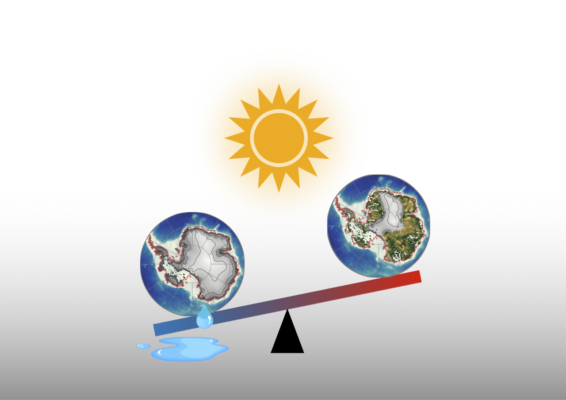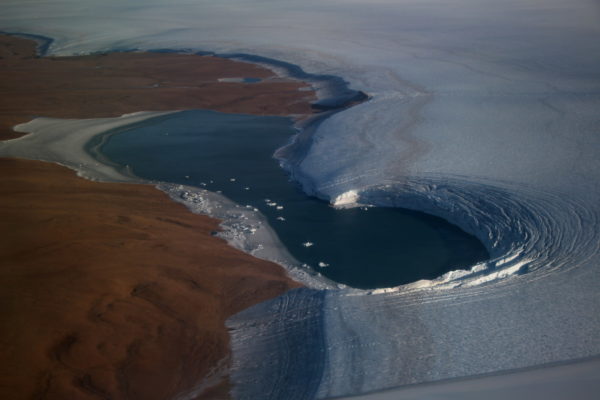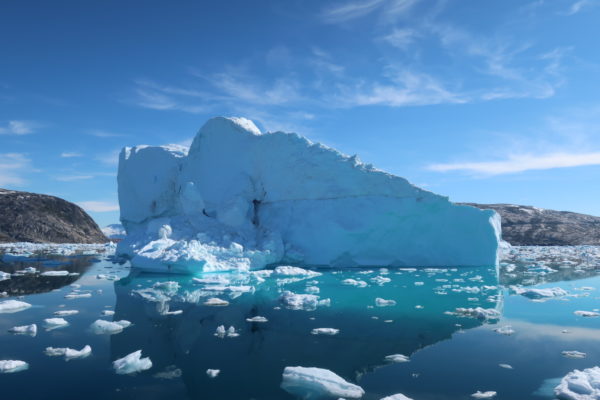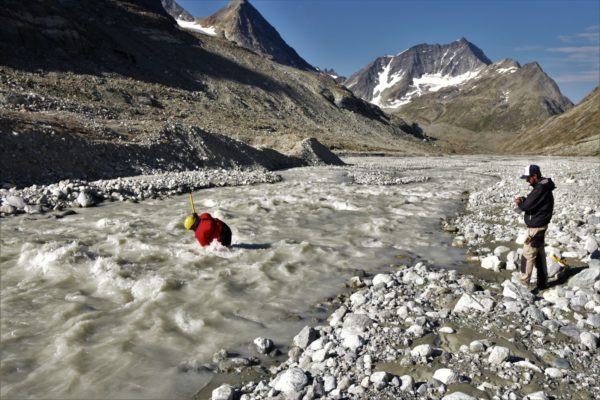Icebergs are ubiquitous in Greenland’s fjords, melting and releasing freshwater as they float towards the open ocean. The amount of freshwater released from these icebergs can be vast – the equivalent of around 50,000 Olympic swimming pools per day in some fjords. New research reveals that this freshwater causes fjord currents to speed-up, which can actually increase the amount of heat delivered t ...[Read More]
Cryo-massy Films

There are countless Christmas films, and almost all of them feature some form of snow, ice or cold weather. There are the classics such as Home Alone, Elf and Miracle on 34th Street, and there are the newer, shall we say ‘Netflix’ style, which feature Princes, Knights and Vanessa Hudgens. There’s just no way to watch them all over the festive period, so let us recommend you our top 5 Christmas fil ...[Read More]
Time To Reflect
Albedo or albedon’t? One possible solution to global warming is to turn everything white to increase the planet’s albedo, i.e. how reflective it is (see, for example, this website). A higher albedo would be one way to reduce global warming, by reducing the amount of incoming shortwave solar radiation absorbed by the planet’s surface, which is then re-emitted as longwave radiation that ...[Read More]
Hysteresis For Dummies – Why history matters

Perhaps you have stumbled upon the word ‘hysteresis’ before, for example in connection with the stability behavior of our Earth’s large ice sheets and their long-term effect on global sea-level rise, or the long-term stability of the Atlantic Meridional Overturning Circulation, or even in another context outside earth/climate science. Or you might have come across this term during your studies, bu ...[Read More]
Seafloor secrets: traces of the past Patagonian ice sheet
Today’s Patagonian ice caps are confined to the high-altitude Andean Mountain range as the Northern and Southern Patagonia ice fields, and they are rapidly melting. The southern part of the Patagonian ice cap drains partially through fast-flowing ice streams into the fjords of Patagonia. Glaciers in this region have been losing ice at accelerating rates by large calving events, due to rising globa ...[Read More]
Did you know… that you can read the edge of Greenland’s ice as an open book?

Scientists struggle to get ice samples from the depths of glaciers where fundamental pieces of information about the climate of Earth are stored. But in many places around the periphery of the Greenland Ice Sheet, you don’t need to drill a deep ice core to obtain ancient ice, you can simply walk across the ice sheet’s margin and look at the layered ice surface. There you can read the ice as though ...[Read More]
How small changes can make a big difference: tipping points in Antarctica
As Antarctica’s mass loss increases, the threat of crossing tipping points both in the ice sheet and the surrounding Southern Ocean is increasing. But what actually is a tipping point? Have tipping points already been crossed in the past? And what might the future hold? What do we mean by a “tipping point”? Scientifically speaking, a tipping point is generally understood to be a threshold that, on ...[Read More]
Running a live stream of proglacial processes
In Switzerland, nothing is really remote, but some places are more so than others. Dense infrastructure networks typically provide convenient access to research sites in the Alps where it is difficult to feel far away from home. However, this is not always the case… For us, our home for the summer is a bit different. We work at 2400 m above sea level in Southern Switzerland, in a narrow vall ...[Read More]
The physical and social changes facing the mountainous populations of the Karakoram Range
As a child, Shakir remembers long extreme winters with heavy snowfall and dry blistering winds, where it was hard to play outside. He grew up in a village named Gulmit, located at an elevation of 2500 m, surrounded by the high snow caped mountains in the Karakoram Range in northern Pakistan. That was 30 years ago, when climate change was still not a cause of concern for the local people. Today, in ...[Read More]
Women of Cryo II: Dr Lu Li
Women make up 50.8% of the worlds population, yet fewer than 30% of the world’s researchers are women. Of this percentage, BAME (Black Asia and Minority Ethnic) comprise around 5%, with less than 1% represented in geoscience faculty positions. The divide between women in the population and women in STEM needs to be addressed. Through a series of blog posts we hope to raise the voice of women in th ...[Read More]



